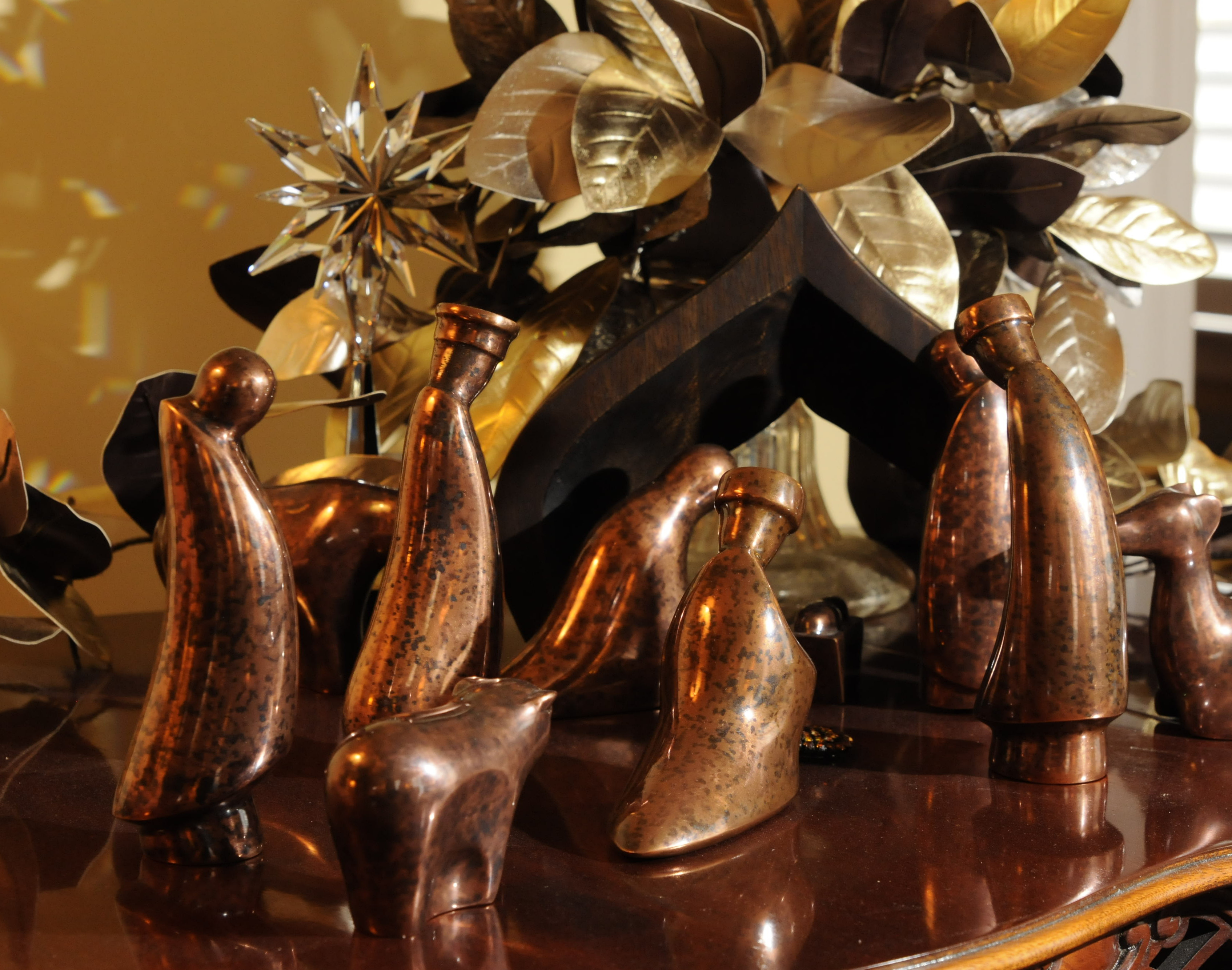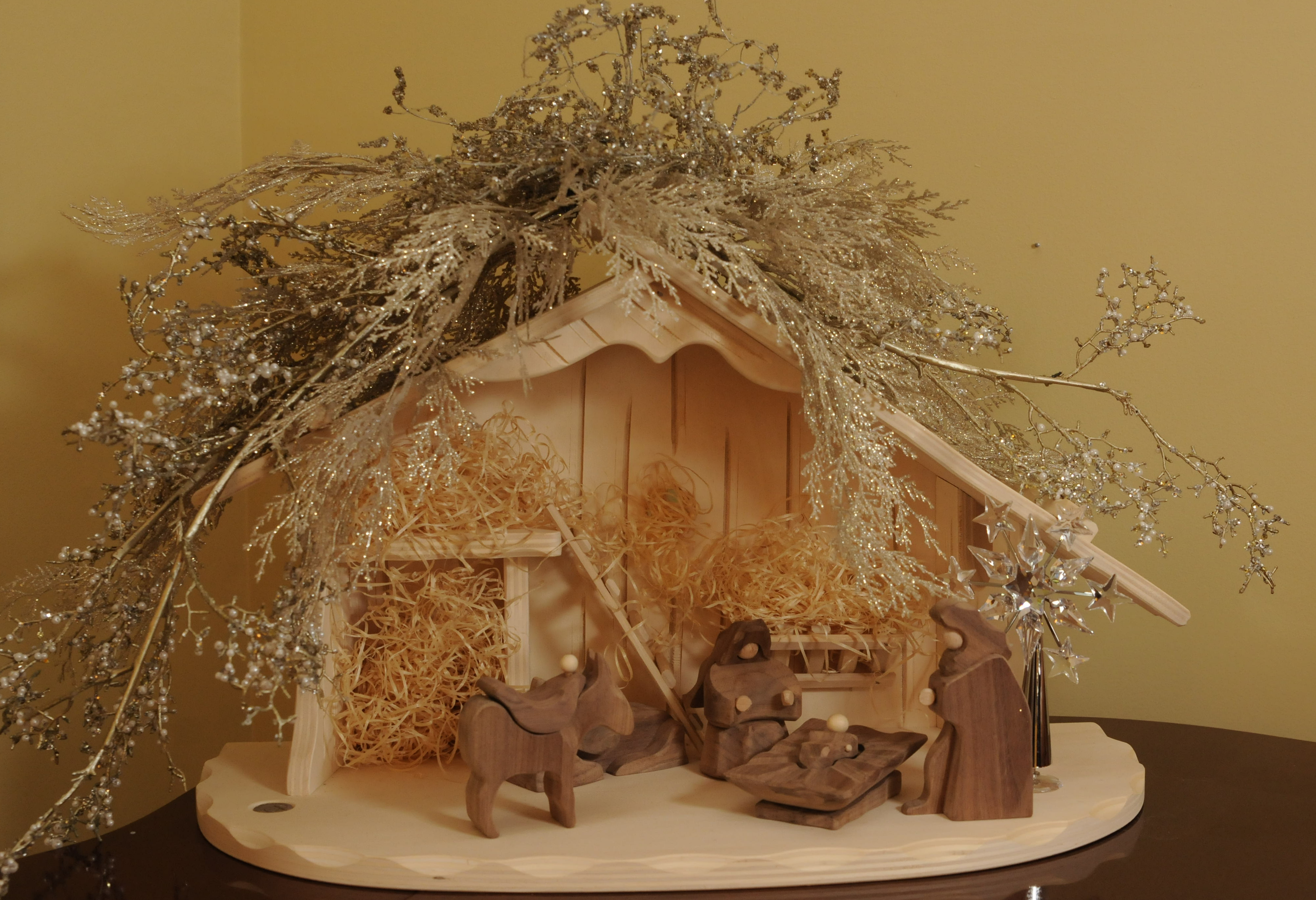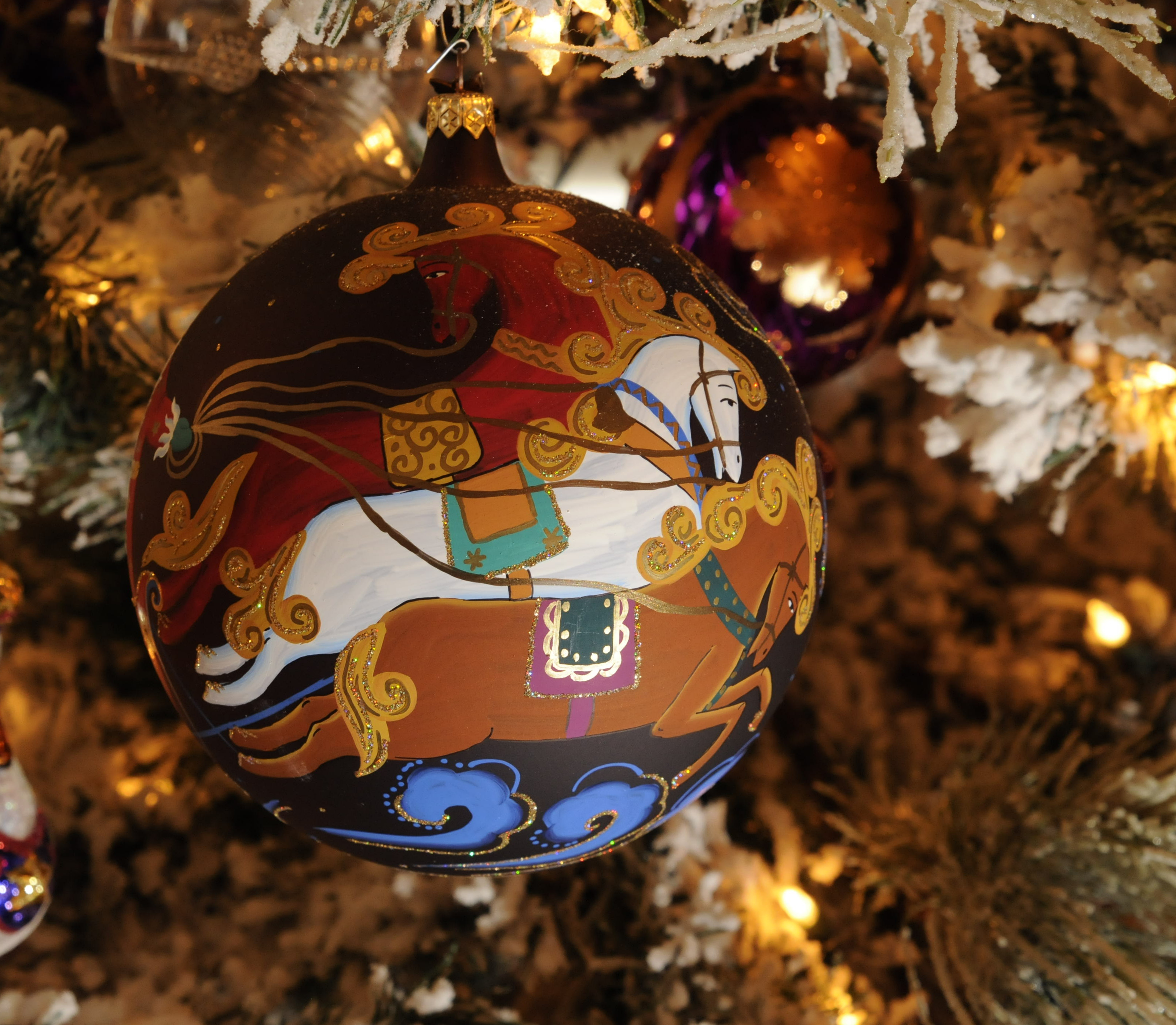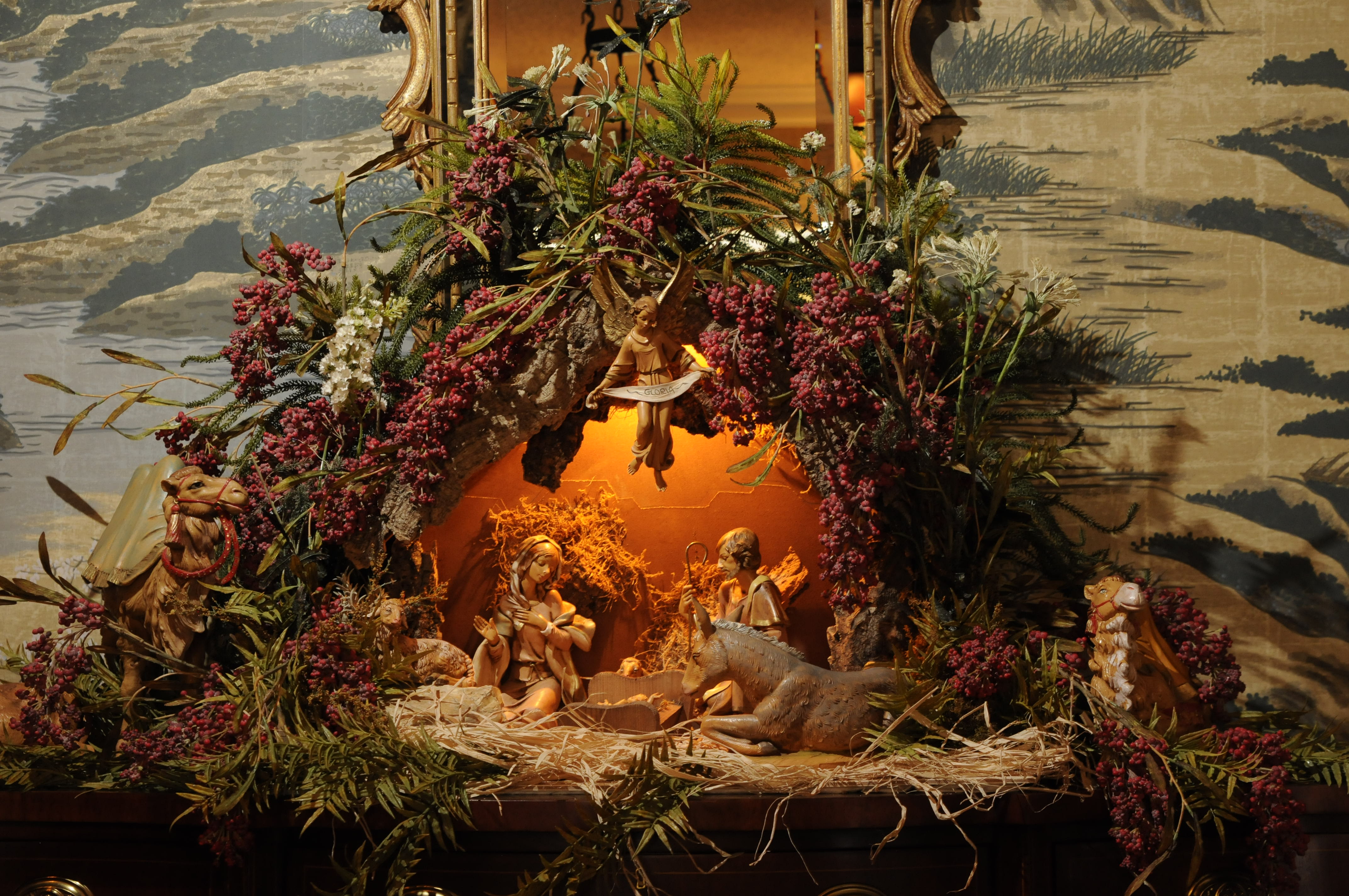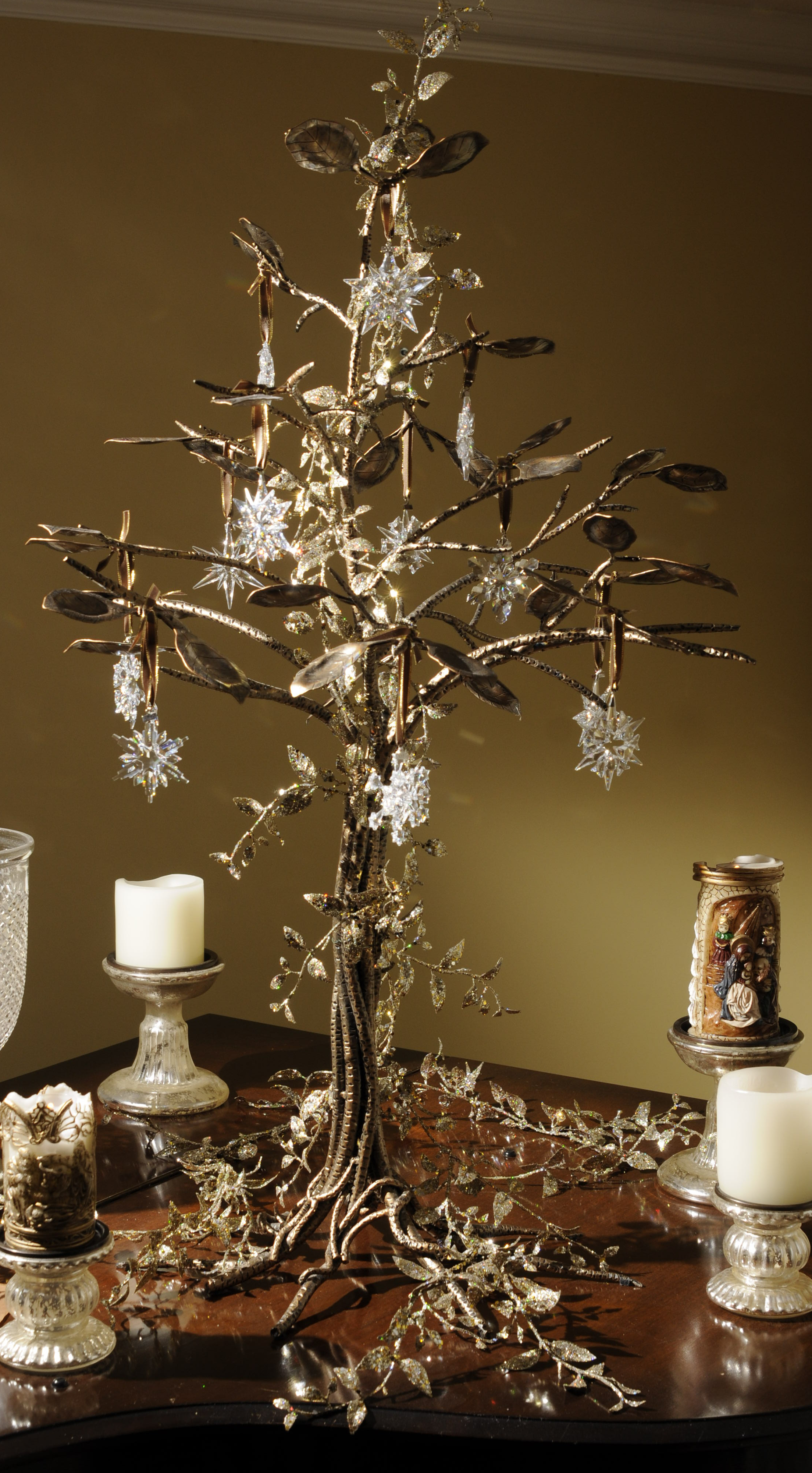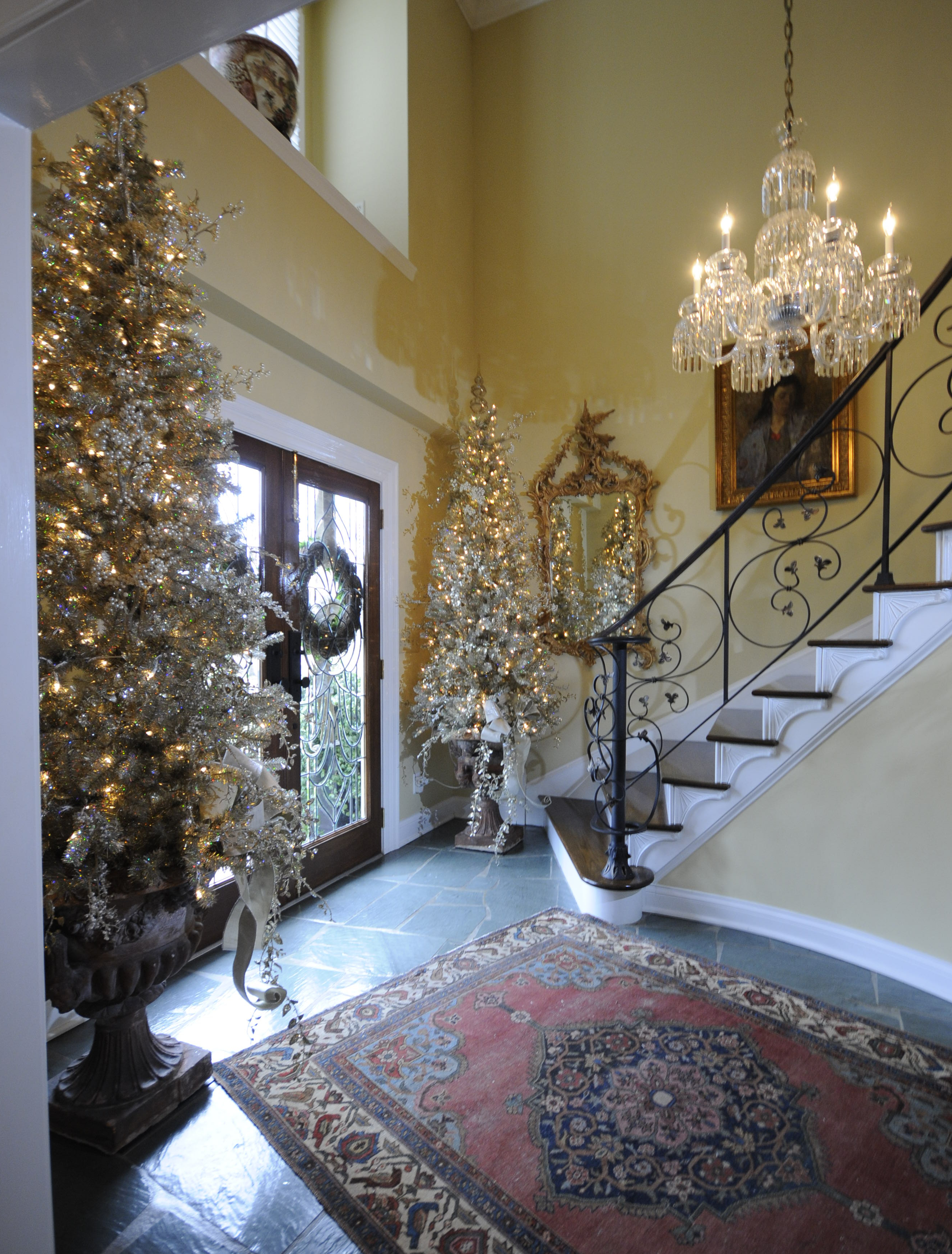Dianne and L.P. Cline have been traveling to Europe and Russia on purchasing trips for their businesses since 1990; first sourcing antiques, then Russian artwork.
With each visit abroad, the couple also has added to their personal collection of sacred and secular Christmas symbols. During the holidays, the Clines display six Nativity scenes and a dozen Christmas trees whose designs represent the talent of artisans in Germany, Poland, England, Italy, Mexico and the former Soviet Union, as well as the United States.
"Dianne and I are cousins, so I have followed this from Day 1," says Nancye Pikciunas. "They are so into the Russian art that everything they do - the arrangements, any decoration - is creative and ties in with the art. The ornaments he brings from Russia are wonderful. I'm impressed by it all."
The Clines operated an antiques business for 20 years before narrowing their focus to Russian artwork. They opened LP Cline Gallery, dedicated entirely to Russian artwork, on Broad Street in 1995.
"The way Russian art affects you - we call it masculine emotion. It reveals the soul and spirit of the artist," Dianne says. "Every painting reflects the history of the Russian people. That's what gives it its value in the marketplace; yet it's the love it expresses that makes it desirable to own for yourself."
L.P. explains that, while under communist rule, artists were forced to paint people as happy and successful, a style known as "propaganda art" because life was not as ideal as the scenes depicted.
"If you were part of the Russian union, the government approved what could be sold," Dianne says. "Work was considered property of the government until the 1980s when the Soviet Union fell. Stalin and Lenin burned paintings that they didn't approve of. Artists hid work they did on their own. Now some of those personal works of the 1940s, 1950s and 1960s are being allowed out."
Dianne has interpreted this artistic freedom in an assemblage of metallic decorations that shimmer with an aurora borealis-infused light throughout her home's entryway. Five platinum trees in the foyer and on the staircase landing are wound in white lights and platinum, glittered leaf garland accented with sprays of white pearls.
"They symbolize the unity of spirit, the freedom, the light shining through Russian artists today," she explains.
Viewing the Clines' entire Christmas art collection is comparable to a travelogue since they know the legend and lore represented by their ornaments, and the stories behind the artists who created the collection.
The entryway sets the tone for a global gathering of decorations, each placed in stylized settings created by Dianne, a member of ASID (American Society of Interior Designers).
In their living room, a flocked Christmas tree is filled with Russian handpainted-glass ornaments ranging from Cossacks, merry-go-rounds, bells and Santas to Orthodox priests and dome shapes representing the domes of St. Basil. The focal point is a large, red ball painted with a Russian troika, or sled. The vivid hues of all the ornaments pop against the snowy white flocking.
A handwrought iron tree from Hungary is displayed on the piano, 14 Swarovski crystal stars suspended from its branches. Nativity scenes are displayed on end tables flanking the sofa. One is a contemporary interpretation of the holy family created in copper by a Santa Fe artist. The other is a handcarved wooden manger scene from Germany, over which Dianne has layered silver-sprayed cedar that adds a halo of sparkle to the natural wood.
Watching over that creche is a handcarved wooden angel by Italian artist Clonrad Moroder, who is internationally known for his one-of-a-kind ecclesiastical woodcarvings.
Those are two of six Nativities displayed in the home. The most visually striking spreads the width of the dining room buffet. Its wooden stable and resin figures are from Italy, made by Fontanini. Dianne says she has collected shepherds, animals, Wise Men and the holy family piece by piece for more than 30 years. She decorates the scene with berries and palm fronds - "something like you would find in the area of Bethlehem," she says.
"The dining room Nativity is my favorite because so many of its pieces have been gifts from family members. It has such memories of the anticipation of a new piece every year. It brings back a lot of memories of those who are gone," Dianne explains.
In the dining room's creche and a Mexican manger scene in the kitchen, the Baby Jesus lays on a bed of moss, which carries significant sentiment, says Dianne.
"The moss symbolizes that anyone who comes to the manger and walks on the moss leaves no footprints. So there is no distinction between class; everyone is equal," she explains.
Accent pieces lead the eyes everywhere, from a whimsical set of English carolers to an elegant lacquer box from the Fedoskino school in Moscow, to three Wise Men - actually Steinbach nutcrackers from Germany guarding the base of the den's Christmas tree.
On the opposite side of the den is a second tree decorated solely in glass ornaments handmade by the Mostowskis, a family of Polish descent who have been in the glass-blowing art for nearly 60 years.
Contact Susan Pierce at spierce@timesfreepress.com or 423-757-6284.

